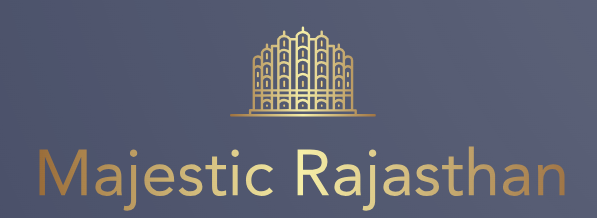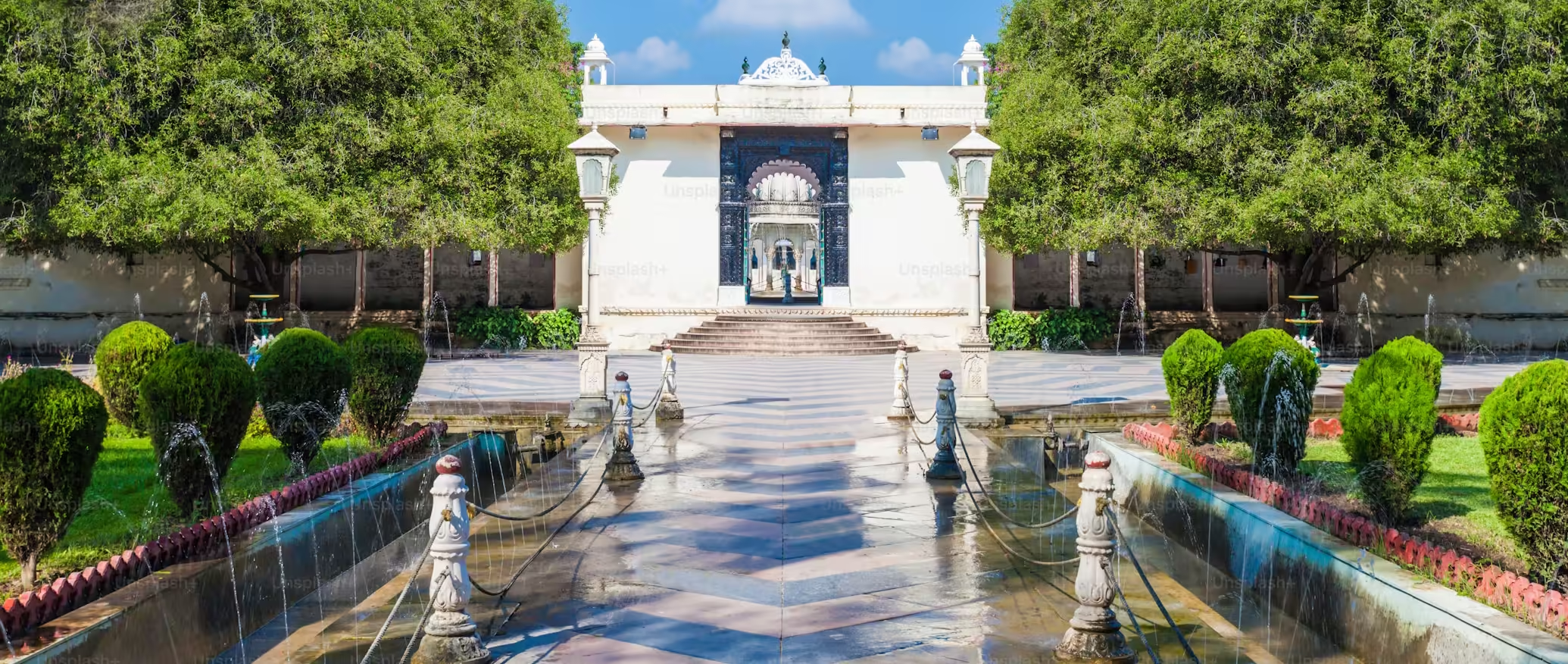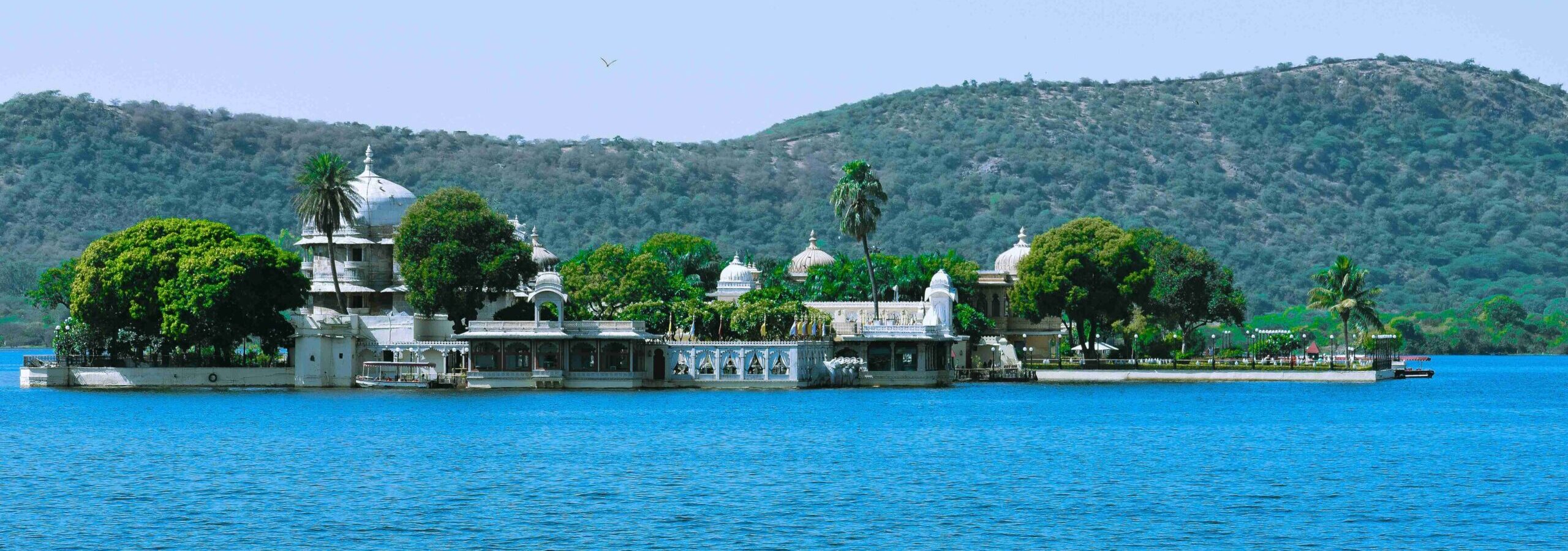Saheliyon Ki Bari Udaipur – Ticket Price, Timings & History
Nestled in the heart of Udaipur, Saheliyon Ki Bari stands as a timeless testament to the grandeur of Mewar’s royal heritage. Translating to “Garden of the Maidens,” designers created this serene retreat as a haven of relaxation and joy for the royal women. The lush greenery, exquisite fountains, and intricate marble work of Saheliyon Ki Bari Udaipur showcase a treasure trove of beauty and tranquility. Saheliyon Ki Bari History Built by Maharana Sangram Singh II in the 18th century, the garden was specifically designed for the royal ladies and their maids. The Saheliyon Ki Bari history is rooted in romance and devotion. Legend has it that Maharana Sangram Singh II built this garden as a gift for his queen and her entourage of 48 maidens. The garden was intended as a private retreat where the women could relax, sing, and dance away from the prying eyes of the court. Saheliyon Ki Bari Udaipur served not only as a place of leisure but also as a symbol of the Maharana’s love and appreciation for his queen. Its design reflects the refined taste and grandeur of the Mewar dynasty. Saheliyon Ki Bari Architecture The architecture of Saheliyon Ki Bari is a perfect blend of Mughal and Rajasthani styles. The garden’s layout is meticulously planned, with sprawling lawns, lotus pools, and intricately designed marble pavilions. The highlight of its design is the system of fountains, which operate without external pumps and electricity—an engineering marvel of its time. Key features include: Lotus Pools: Elegant pools adorned with blooming lotuses that enhance the garden’s natural beauty. Marble Pavilions: Exquisite white marble structures that reflect the artistic finesse of the era. Fountains: Intricately designed fountains powered by gravity, creating a soothing ambiance. Elephant Statues: Marble sculptures of elephants spraying water, adding a playful touch. Things to See in Saheliyon Ki Bari Saheliyon Ki Bari Udaipur is home to several distinct and enchanting water features, each with its unique design and historical significance. Here’s an overview of Swan Bhado, Kamal Talai, Rang Mahal, and the Bin Badal Barsaat Pool: Sawan Bhado Fountain The Swan Bhado fountain is a mesmerizing centerpiece in Saheliyon Ki Bari Udaipur. The name derives from the monsoon (Bhado) season, and the fountain’s design is meant to evoke a sense of rain and rejuvenation. Design: The fountain showcases intricately carved swan statues and jets that create cascading water effects, resembling rainfall. Experience: The soothing sound of flowing water gives visitors the impression of a perpetual monsoon, making it an engineering marvel of its time. Symbolism: Swans represent grace and elegance, fitting the royal theme of the garden. Kamal Talai (Lotus Pool) The Kamal Talai, or Lotus Pool, is one of the most iconic features of Saheliyon Ki Bari Udaipur. Design: Large marble kiosks (chhatris) adorn this pool and are filled with lotus flowers, symbolizing purity and beauty. Cultural Significance: Lotus flowers hold spiritual and cultural importance in Indian traditions, representing divinity and detachment. Visual Appeal: The floating lotuses and their reflection in the clear water create a tranquil and picturesque atmosphere. The elephant statues at the Kamal Talai (Lotus Pool) are intricately carved from white marble and are designed to appear as though they are spraying water into the pool. These majestic figures add a lively charm to the serene lotus-filled pool, showcasing both the artistry and advanced water engineering of the Mewar era. Rang Mahal Fountain The Rang Mahal fountain adds a touch of vibrancy and splendor to the garden. Meaning: “Rang Mahal” translates to “Palace of Colors,” reflecting its vibrant and artistic ambiance. Design: Artistically designed pavilions with colorful embellishments surround the fountain, offering a stunning contrast to the pristine white marble. Experience: The Rang Mahal section often served as a gathering spot for royal celebrations and cultural performances, showcasing the lavish lifestyle of Mewar royalty. Bin Badal Barsaat Pool (Rain Without Clouds Pool) The Bin Badal Barsaat Pool is one of the most fascinating features of Saheliyon Ki Bari, offering a unique sensory experience. Meaning: The name translates to “Rain Without Clouds,” and the pool’s fountain system simulates rainfall even when the skies are clear. Engineering: The ingenious gravity-fed water system powers the fountains, creating the effect of gentle rain. This was an advanced feat for its time and still amazes visitors. Significance: The designer created the pool to provide the royal women with the joy of rain during the dry season, reflecting both creativity and luxury. Visitor Experience: The rhythmic sound of water droplets falling into the pool enhances the serene ambiance, making it a favorite among tourists. These pools and fountains at the Garden of the Maidens showcase the artistic and engineering brilliance of the Mewar dynasty. Each feature offers a unique experience, combining beauty, history, and innovation in one of Udaipur’s most serene and romantic settings. Museum Garden of the Maidens houses a small museum that showcases royal artifacts, paintings, and historical relics, offering a glimpse into Udaipur’s regal past. Saheliyon Ki Bari Udaipur Timings Saheliyon ki Bari Udaipur timings are 8:00 A.M. to 8:00 P.M. Saheliyon Ki Bari Udaipur Ticket Price Saheliyon Ki Bari Entry fee for Indians is 30 Rs. Saheliyon Ki Bari Udaipur Ticket Price for foreigners is 150 Rs. Best Time to Visit Saheliyon Ki Bari Season: October to March is great, as the weather is moderate and adds to the garden’s attractiveness. Time of Day: Early mornings and late afternoons are ideal for avoiding crowds and enjoying a peaceful atmosphere. How to Reach Saheliyon Ki Bari Saheliyon ki Bari is easily accessible by road from anywhere in Udaipur. Public transportation is the best way to get to Bari. Tourists can use local buses, autorickshaws, cycle rickshaws, or rent taxis/cabs. Conclusion Saheliyon Ki Bari is a must-visit destination for anyone exploring Udaipur. Its enchanting beauty, historical significance, and serene ambiance make it a unique experience for tourists. Whether you’re a history enthusiast, a nature lover, or a photography aficionado, this garden has something to offer for everyone. As you wander through the lush
Saheliyon Ki Bari Udaipur – Ticket Price, Timings & History Read More »



